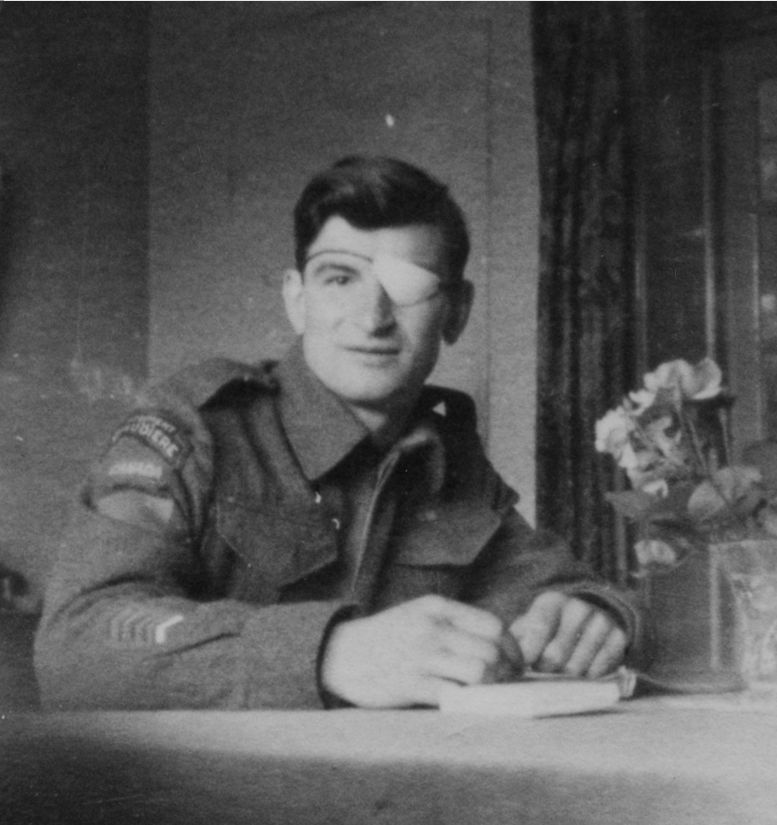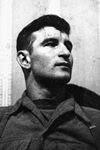Cockle Commandos of the Royal Marines
The War Illustrated, Volume 9, No. 225, Page 623, February 1, 1946.
Specially trained Royal Marine volunteers who paddled in two-man canoes – code name “cockle” – fifty miles up the Gironde River to sink enemy shipping at Bordeaux, accomplished what is officially described as one of the most daring “individual” attacks of the War. Using limpet mines, they attacked six ships suspected of being blockade runners. At least three, probably five, of the ships were holed. Ten Marines, in five cockles, were launched at night from H.M. Submarine Tuna at the entrance to the Gironde, on December 7, 1942, when Germany held the whole of the French coastline.
The crew of one cockle only – Maj. H. G. Haslar, O.B.E. (Force Commander) and Mne. W. E. Sparks – came back; of the rest of the party Mne. Moffat was drowned and Lt. Mackinnon, Sgt. Wallace, Cpl. Laver, and Mnes. Mills, Conway and Ewart – who attempted to escape into Spain – were arrested and shot on March 23, 1943, by decree of Hitler. The two cockles that reached their objective covered 91 miles in five nights, their crews hiding on land by day. On the first night of this heroic exploit, the cockles Catfish, Coalfish, Conger, Cuttlefish and Crayfish were launched in calm weather from the Tuna in the manner shown above. For 1½ hours they paddled, then ran into a tide-race. Coalfish was lost, leaving no trace. Shortly afterwards, in another tide-race, Conger capsized; the crew were towed in life-jackets inshore and left to land.
In negotiating a narrow passage between anchored vessels and the mole at Le Verdon, Cuttlefish lost formation and was not seen again. The remaining two cockles beached at daylight on a small sandy promontory, and the crews concealed them. Shortly afterwards, a number of French fishermen landed from small boats and, joined by women from the shore, made breakfast on the beach. Further concealment being impossible, Major Haslar spoke to them and, fortunately, found them friendly.
On the second night, the cockles were manhandled across three-quarters of a mile of sand and mud for launching, impeded by outlying sandbanks, and water freezing on the cockpit covers. They hid-up in a field during the day, and early on the third night a start was made to catch the flood tide. Under way again, they took cover among thick reeds inshore as the channel narrowed. When they landed they found an A.A. Battery only fifty yards away and were not able to discover another suitable spot until 7.30 a.m. Again they were compelled to lie up, in a field of long grass, all day, unnoticed by a man and a dog who passed within 100 yards.
On the fourth nigh, the craft reached a pontoon pier opposite the South Basin at Bordeaux and, passing it safely, found a gap in some reeds through which they could force their way. Daylight revealed two good-sized cargo ships lying alongside, immediately opposite, about 800 yards away. The crews spent the evening in settling fuses to their limpet mines. In the darkness of the fifth night, Catfish safely passed the entrance to the basins on the west bank of the river, in spite of lights on the lock gates. Eight mines were planted by her crew – three on a cargo ship of 7,000 tons, two on the engine room of a small transport, one on the stern of a tanker.
While turning near the transport to go downstream, Catfish was seen by the sentry on deck, who shone his torch on her. Major Haslar succeeded in pulling the cockle into the shelter of the ship and let her drift silently with the tide. The sentry, puzzled, followed the Catfish with his torch until it passed from his sight. Meanwhile, Crayfish had reached the east bank at Bordeaux without finding any targets, so returned to deal with the two cargo ships lying near the South Basin. Five mines were placed on the larger ship, three on the smaller. The mission accomplished, both cockles speed away downstream. At 6.00 a.m. they separated, and ran ashore about a quarter-mile apart. Crayfish vanished; nothing more was heard of her crew. Major Haslar and Marine Sparks, of Catfish, returned safely to England, and Major Haslar was awarded the D.S.O. And Marine Sparks the D.S.M., on Sept. 28, 1943.
Index
Previous article
Now It Can Be Told! - How H.M.S. Exeter Fought Her Last Battle
The full story of H.M.S. Exeter's gallant end, fighting against impossible odds off the coast of Java, reached the Admiralty in December 1945. The cruiser, famous for her part in the glorious battle a
Next article
Allied Front-Line Planes That Flew Unarmed
Air-Sea Rescue services were busier during the Arnhem operation than on D-Day, and no fewer than 181 airborne troops were then rescued from wrecked Hamilcar and Horsa gliders. In the Mediterranean zon





